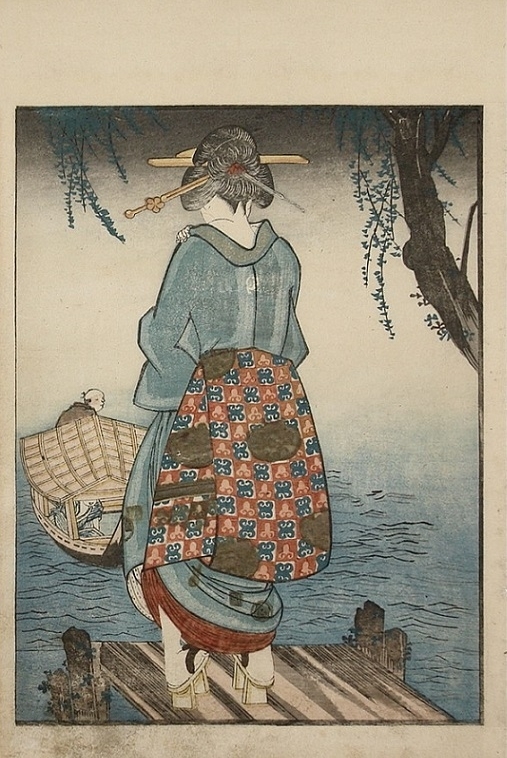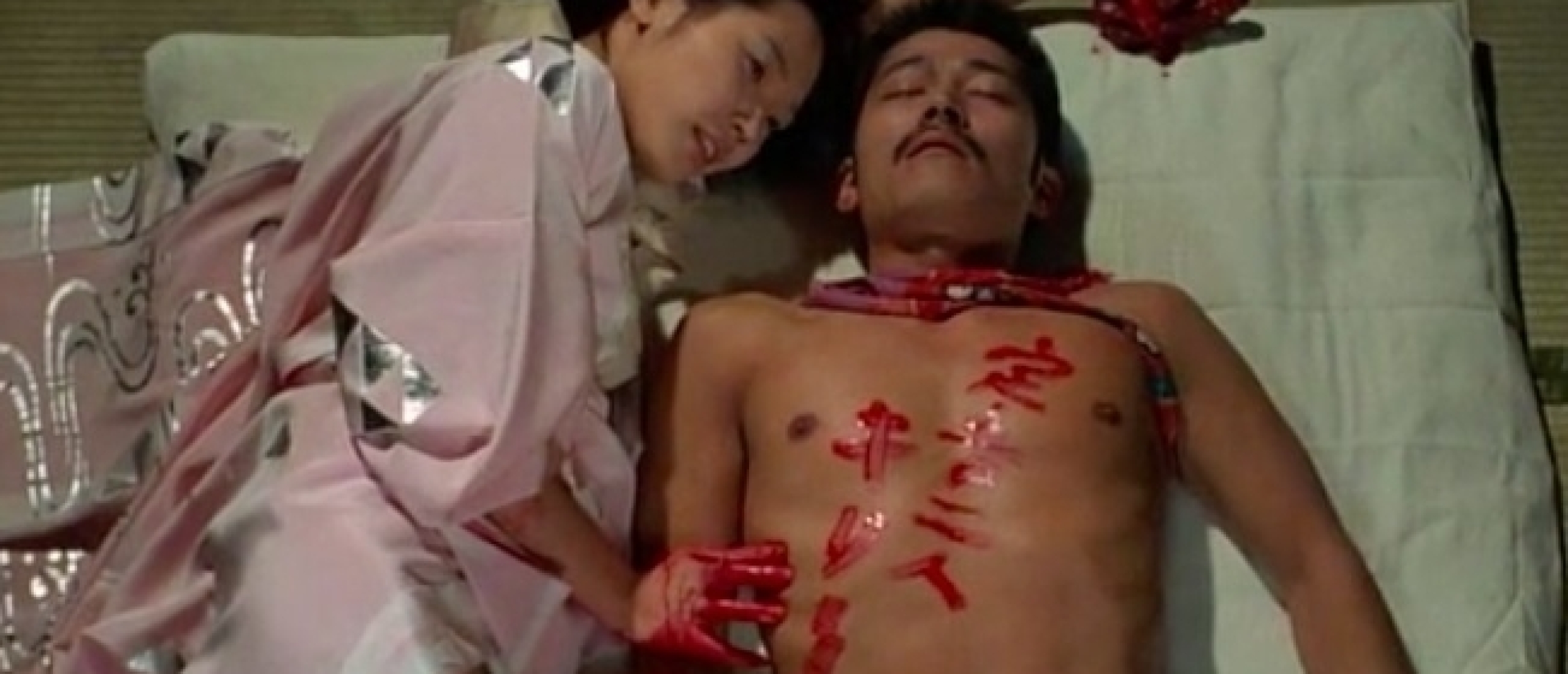
Shunga Gallery focuses mainly on sensual paintings and prints, but the material of the current article enables us to talk about “moving” shunga pictures, we mean cinema, of course. Japanese prostitute Sada Abe (1905-ca. 1972), who murdered and then mutilated (cut off the penis and testicles) her lover Kichizō Ishida in 1936, became a heroine of books and several movies. Her scandalous notoriety in Japan is comparable to those of Charles Manson in the USA. One can only imagine how many shunga designs based on this story Kuniyoshi or Hokusai could produce if Sada Abe had lived in the Edo period or earlier.

Fig. 1. Sada Abe portrait, circa 1935 (Wikipedia.org)
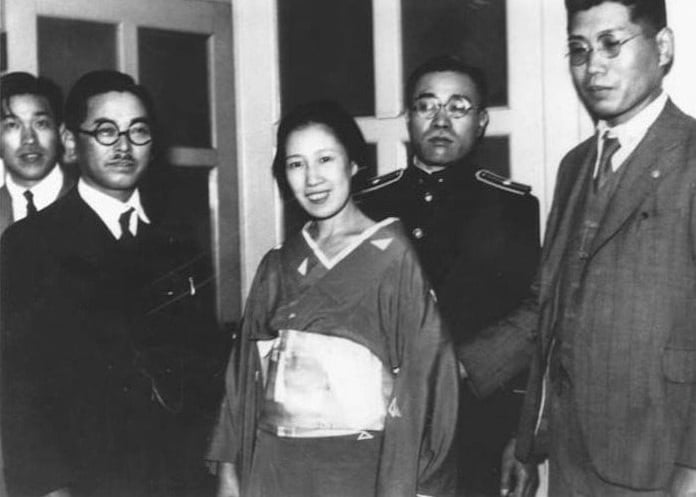
Fig. 2. Paparazzi photo taken at Takanawa Police Station, Tokyo on May 20, 1936 (pleasekillme.com), 1936
Pursuing a Dream
Abe was born in the family of tatami mat makers in 1905. She was the youngest of the four survived children, and her mother indulged her. As a teenager, Abe started the sex life, and, according to her testimony, this was the heroine the reason why the parents sold her to a geisha’s house in Yokohama when she was seventeen. According to other sources, it was she who wanted to become a geisha since childhood. The mother encouraged Abe to take lessons in singing and playing the shamisen, which was more common for geishas and prostitutes than for artists. Skipping her school, she would try putting on geisha make-up and imagine herself a seductive celebrity in a gorgeous kimono with her neck exposed.
Fig. 3. The Image of a geisha from “Shunshoku Irifune Chô” series by Utagawa Kuniyoshi
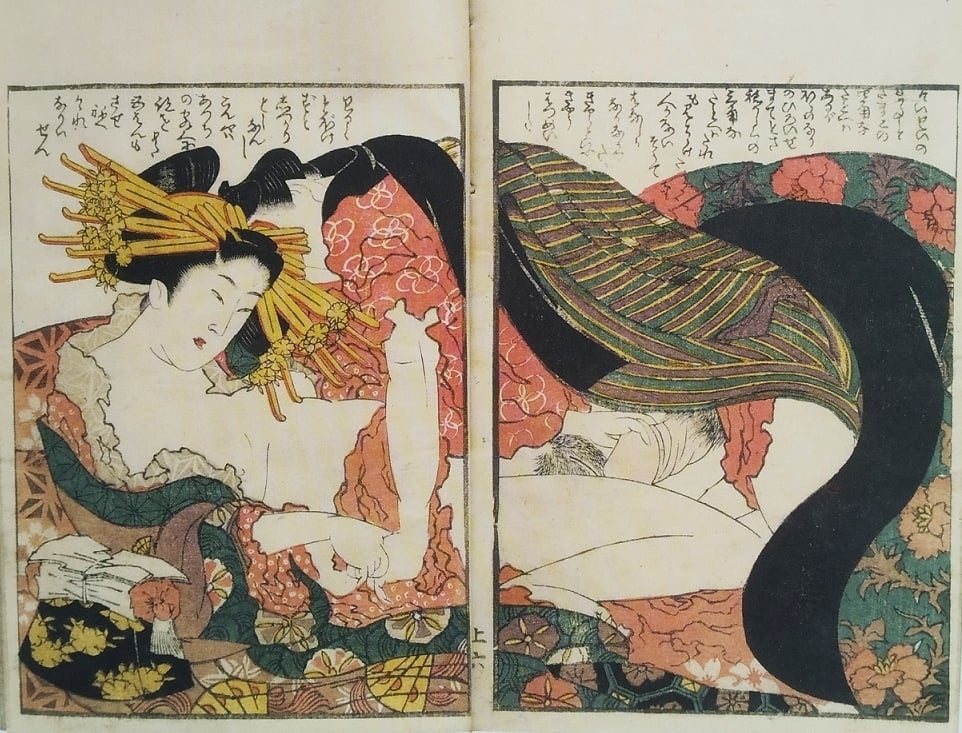
Fig. 4. Keisai Eisen, ‘Hana-awase shiki no nagame’, 1826
The Rape and Further Life
Abe’s eldest brothers and sisters were also rather unmanageable. Her brother Shintarō was known as a womanizer; her sister Taruko was sent to a brothel because of her lascivious behavior. Troubles caused at home by these two made Sada Abe spend most of her time on the streets, where she joined the company of reckless teens. Fifteen years old, she was raped by a Keiō University student. This trauma apparently affected her future sexual relationships. It was two years after this case when Abe was sold to the geisha’s Yokohama house. Parents hoped the training would make her more disciplined and obedient. At the house, Abe realized that geisha’s life, as they say, “is no bed of roses,” because this profession requires total self-devotion. In fact, she didn’t manage to become a geisha and stopped at the rank equaling to a prostitute. Having worked for five years at Yokohama, she contracted syphilis. Thus, Abe was obliged to undergo medical expertise, as did common prostitutes. The situation provoked her to give up the geisha career and eventually turn into a woman of easy virtue. Her transitions from one brothel to another are quite similar to those of the heroine of Tinto Brass’s movie “Paprika” (1991), showing the story of legal prostitution in Italy.

Fig. 5. Poster of “Paprika” (1991)
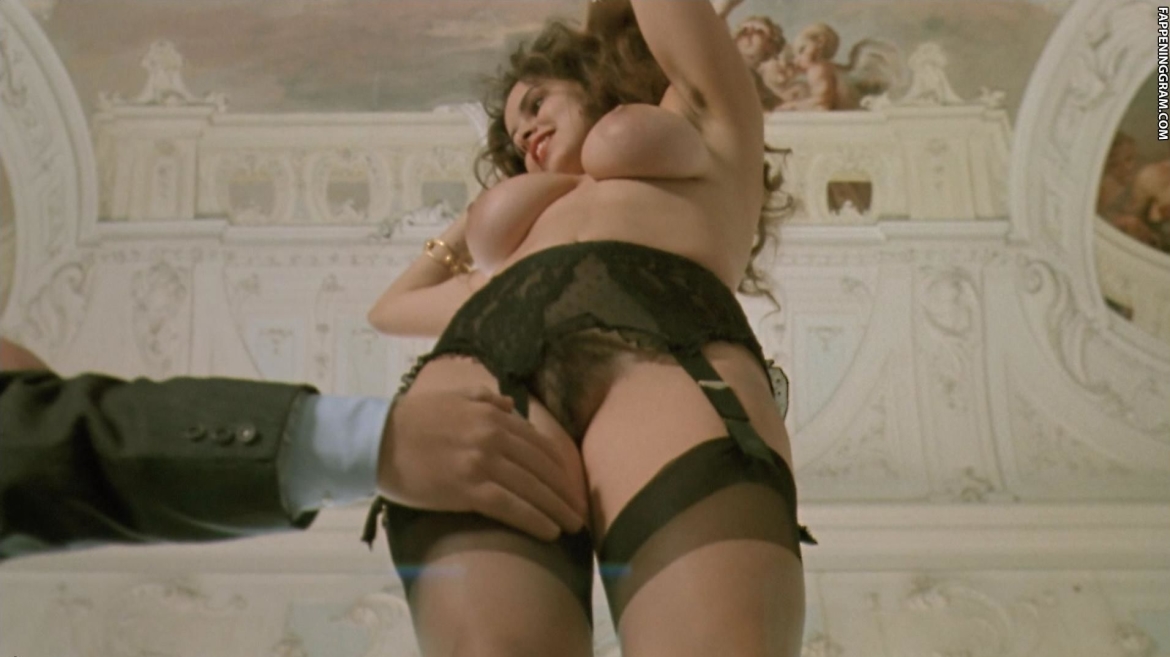
Fig. 6. Paprika and the brothel’s doctor (cloudigirl.com)
The Pain in The Employer’s Neck
She began her job at Osaka’s Tobita brothel in the early 1930s. There she stole money from the clients and several times attempted to run away but was tracked down by the local police. Abe quitted her job at Yokohama, being unsatisfied with the earnings. Though, the better-paid profession of a prostitute also wasn’t her cup of tea because it failed to meet her childhood dream. After two years of working as a licensed prostitute, Abe finally got out of the brothel and found a job as a waitress. Modest wages made her regret this switch, and then she became an unlicensed prostitute in Osaka.
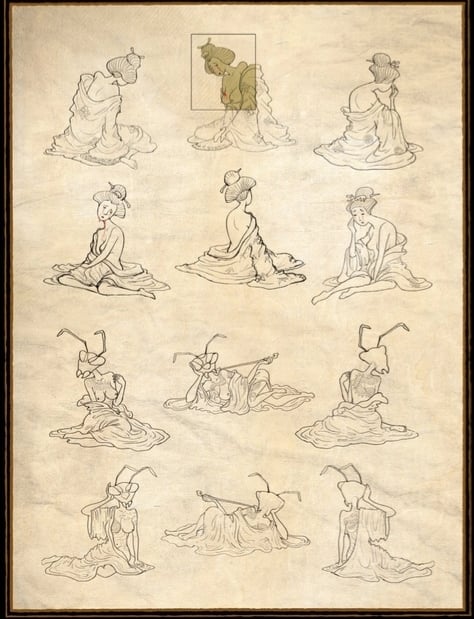
Fig. 7. Image from the artbook on the computer game “Alice: Madness Returns”, 2011. p. 127. I don’t know whether the geisha mantis was inspired by Sada Abe, but these drawings evoke her figure in mind.
Kinnosuke Kasahara
Abe moved to Tokyo in 1932 after the death of her mother. There she entered the local market of illegal prostitution. In 1934, Abe became a mistress of Kinnosuke Kasahara, who was a friend of the brothel owner. He released Abe when she was arrested during a police raid. Kasahara also provided her with an income and set up a house where she lived. Afterward, he testified, “She was really strong, a real powerful one. Even though I am pretty jaded, she was enough to astound me. She wasn’t satisfied unless we did it two, three, or four times a night. To her, it was unacceptable unless I had my hand on her private parts all night long … At first, it was great, but after a couple of weeks I got a little exhausted” (wikipedia.org). Abe didn’t want to be only a mistress and suggested him leaving his wife to marry her. When he refused, she asked if she could take another lover, but he also disagreed. Abe claimed that he didn’t love her and treated her “like an animal,” so she left for Nagoya.
Gorō Ōmiya
Disappointed with her role as a mistress of Kasahara, Abe one more time tried to leave the sex industry. She began working as a maid in Nagoya restaurant. There she had an acquaintance with the professor and banker Gorō Ōmiya, who also had the ambition to become a member of the Japanese parliament. Having learned of her contracting syphilis, he provided her treatment at a hot springs resort in Kusatsu. What’s more, Ōmiya advised her to run a small restaurant to become financially independent and told her to start working as a restaurant apprentice. This way fatally led her to Kichizō Ishida.
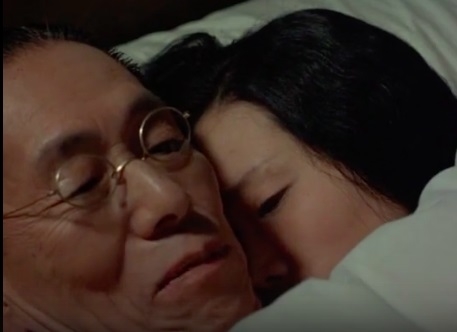
Fig. 8. Goro Ōmiya played by Kyôji Kokonoe in the movie “In the Realm of Senses”, 1976
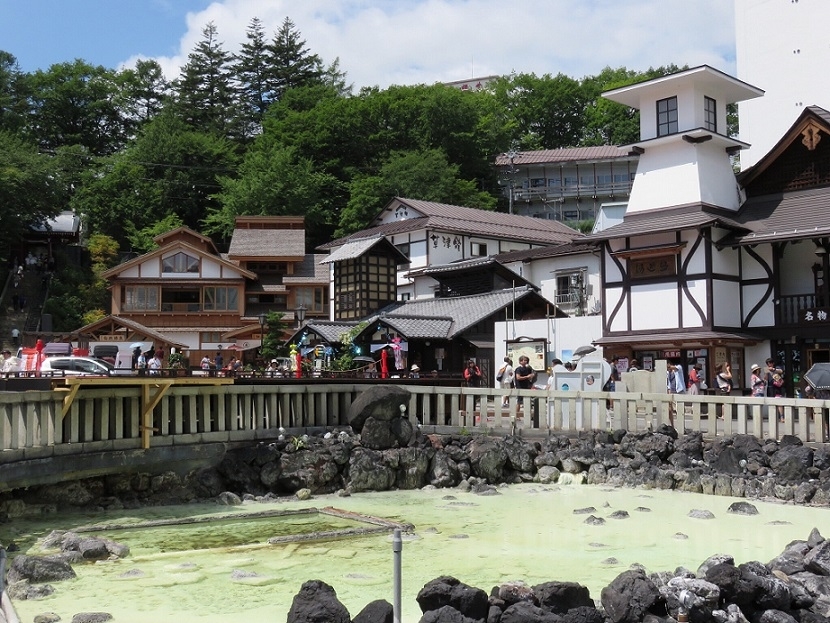
Fig. 9. Kusatsu hotspring (Wikipedia.org)
Kichizō Ishida
Having returned to Tokyo in 1936, Abe started working as an apprentice at the Yoshidaya restaurant. Its’ owner Kichizō Ishida, who was 42 years old, had founded the establishment in 1920. He began his career in this business as an apprentice like Abe, and at the time when she came, he’d already let his wife be a practical owner of the restaurant. Ishida had a reputation as a womanizer. He immediately started making amorous advances to a new person. In her turn, Sada got bored with Omiya and liked Ishida’s attention, seeking somebody new as well. Their sexual relationship began in the restaurant quite romantically, accompanied by a love ballad of one of the restaurant’s geishas.
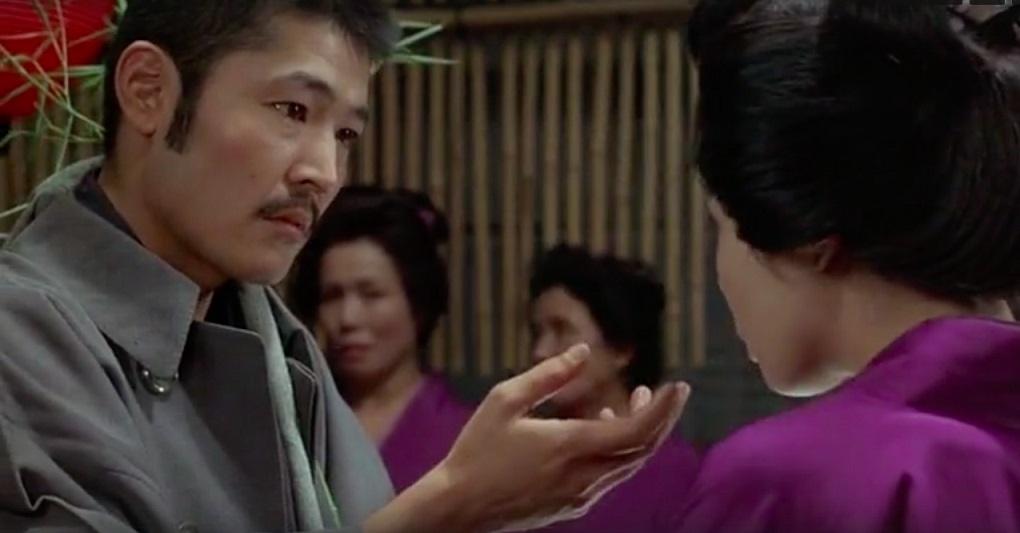
Fig. 10. Ishida and Abe seeing each other for the first time, “In the Realm of the Senses”
The Love Marathon
On April 23, Abe and Ishida met at a teahouse in the Shibuya neighborhood for a quick pre-arranged encounter. The situation turned out to be a Shakespearean one because they remained in bed for four days making love and drinking sake. On the night of April 27, they moved to another teahouse in Futako Tamagawa. They wouldn’t stop making love even when maids and geishas entered the room. Then they moved to the Ogu neighborhood. All in all, their love marathon continued for two weeks, as Ichida appeared in his restaurant only on May 8. Abe realized she fell deeply in love with Ichida. Later, she said, “There were men I liked, and with whom I slept without accepting money, but none made me feel the way I did toward him.”

Fig. 11. Insatiable lovers by Kunisada (“Shunka shuto: Shiki no nagame” series)
Inspired by a Play
Ishida’s return to the wife made Abe desperate. On May 9, she attended a play in which a geisha attacks her lover with a knife. Prince Hamlet used the stage to learn the truth about the death of his father. Sada Abe used the play as a source of inspiration for what she could do with her misery. She decided to threaten Ishida with a knife that she would buy two days after. Having met her lover on the night of May 11, Abe pulled the knife out of her bag and quoted the play, “Kichi, you wore that kimono just to please one of your favorite customers. You bastard, I’ll kill you for that!” Ishida turned pale but seemed to like it, as claimed Abe.
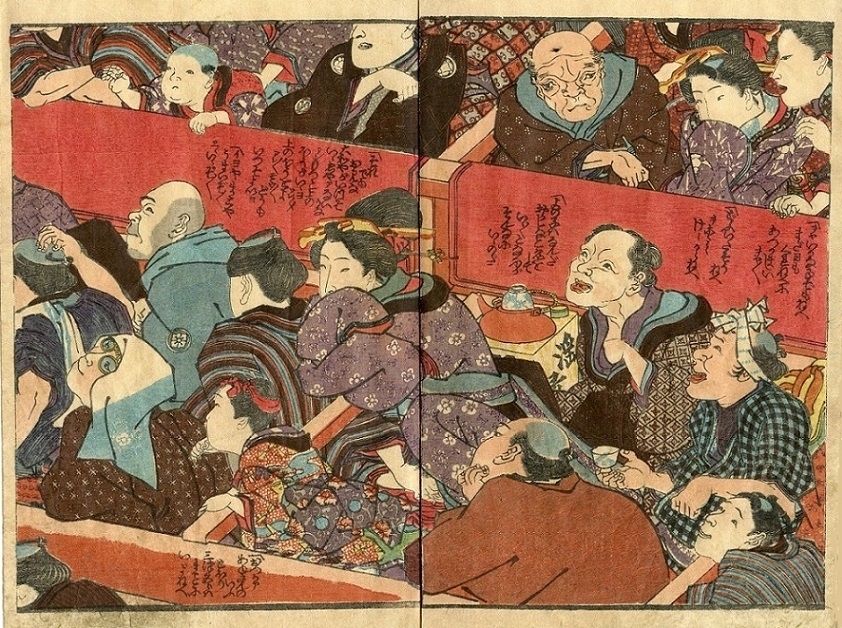
Fig. 12. The audience watching a kabuki play by Kunisada
La Petite Mort, La Grand Mort
The lovers reunited and continued their love affair until the death of Ishida on May 18. Abe threatened Ishida with the knife during the love-making. She put it to the base of Ishida’s penis and said to him that she would cut it off if he returned to his wife again. Ishida laughed at this, and as far as we can judge, it easily became a sort of their dangerous erotic game, at least in the eyes of Ishida, who didn’t regard it a real intention. Being on unsafe territory, the aroused man suggested Abe asphyxiation, and they strangled each other in turn. They were doing it for two hours straight. Abe also used her obi sash, and when she once stopped, Ishida felt pain and had to take thirty sedative tablets. He told her that night, “You’ll put the cord around my neck and squeeze it again while I’m sleeping, won’t you … If you start to strangle me, don’t stop, because it is so painful afterward.” Abe confessed that she took it as a joke. Nevertheless, at 2 am on May 18, she wrapped her sash twice around Ishida’s neck and choked him to death. Later, she told the police that she felt liberated after committing a crime. “After I had killed Ishida I felt totally at ease, as though a heavy burden had been lifted from my shoulders, and I felt a sense of clarity.” If Abe was a skilled geisha, she could have left a death poem at the place of the crime, and it would probably look like this:
a woman who’s born
under the heavy star
knows heaven by its’ pressure
so when she falls in love
she does it heavily
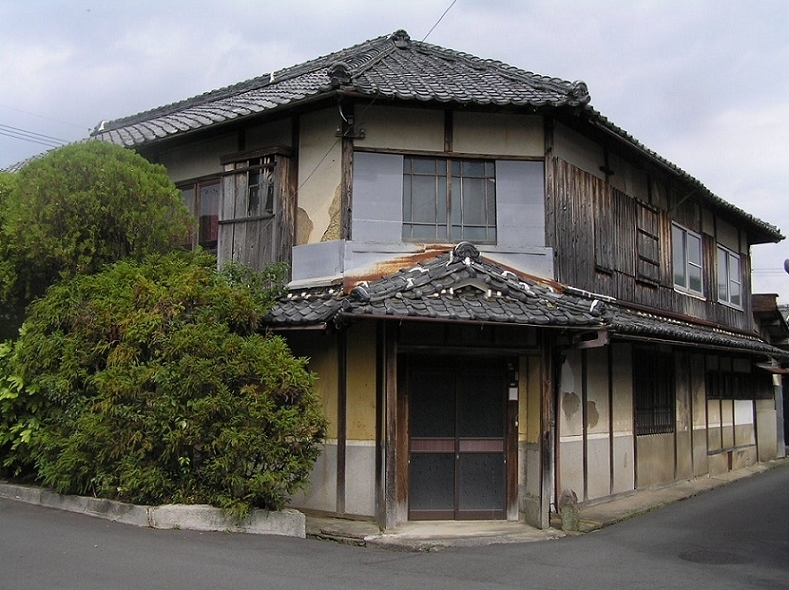
Fig. 13. The last brothel where Abe worked (Wikipedia.org)
Posthumous Mutilation Out of Love
After lying with a corps of Ishida for several hours, Abe separated his penis and testicles with a knife and kept them with her for three days until she was arrested. She explained that she did it as far as it was impossible to carry Ishida’s body with her. “I couldn’t take his head or body with me. I wanted to take the part of him that brought back to me the most vivid memories”, said Abe. She also admitted practicing necrophilia. “I felt attached to Ishida’s penis and thought that only after taking leave from it quietly could I then die. I unwrapped the paper holding them and gazed at his penis and scrotum. I put his penis in my mouth and even tried to insert it inside me … It didn’t work, though I kept trying and trying. Then, I decided that I would flee to Osaka, staying with Ishida’s penis all the while. In the end, I would jump from a cliff on Mount Ikoma while holding on to his penis.” Being asked why she murdered Ishida, Abe said that she did it because her love was enormous. “I loved him so much, I wanted him all to myself. But since we were not husband and wife, as long as he lived he could be embraced by other women. I knew that if I killed him no other woman could ever touch him again, so I killed him.” Society was shaken by the “Abe Sada incident.” The career of Gorō Ōmiya was ruined. The sentence was surprisingly light: six years of imprisonment, apparently, because the medical commission concluded that she was pathologically insane and pervert, however, Abe demanded a death penalty and insisted on her sanity. Her last words were, “The thing I regret most about this incident is that I have come to be misunderstood as some kind of sexual pervert … There had never been a man in my life like Ishida.” People were not only shocked but also curious about the case and the figure of Ishida in particular. There were rumors that he had an enormously large penis, but Abe said that it was average and added, “Size doesn’t make a man in bed. Technique and his desire to please me were what I liked about Ishida.” She was released five years after the murder, on May 17, 1941, due to the anniversary of the mythical founding of Japan. She received great public attention, which at first sight may resemble a vicious strategy of the Western media popularizing maniacs like Charles Manson or Wayne Gacy for the sake of a cheap sensation. But it’s not the case. Strangely enough, “poisonous woman” Sada Abe became an art symbol that helps Japanese people reflect upon the history of their nation. She turned out to be among those great Yoshiwara courtesans whose shunga images gradually changed the cultural landscape of Japan.
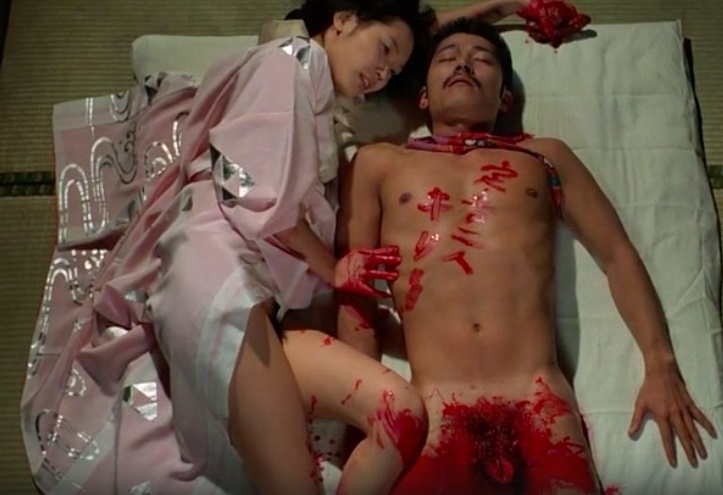
Fig. 14. The movie scene in which Abe lies with the corps of Ishida. The real Abe also wrote in Ishida’s blood “Sada no Kichi Futari-kiri” (Sada and Kichi, the two of us forever).
The Case of Sada Abe As a Cultural Phenomenon
Despite all the romantic haze around the accident, the murder and the situation in general may seem not to be uncommon. A womanizer and a prostitute meet each other and begin their drunk sexual encounters. The possessive mistress kills the lover to prevent his return to the wife. What makes this mundane plot a special one? The answer lies in the social context. The crime was committed in pre-fascist Japan, so its’ investigation reflected the crucial features of the 1930s. The cultural adaptations of the story were produced in the postwar era, in a totally different country that survived Hiroshima and Nagasaki.
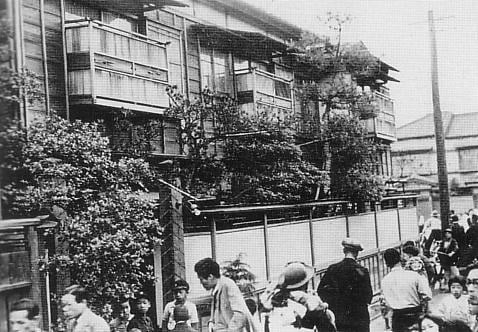
Fig. 15. The site of the Abe Sada incident (Wikipedia.org)
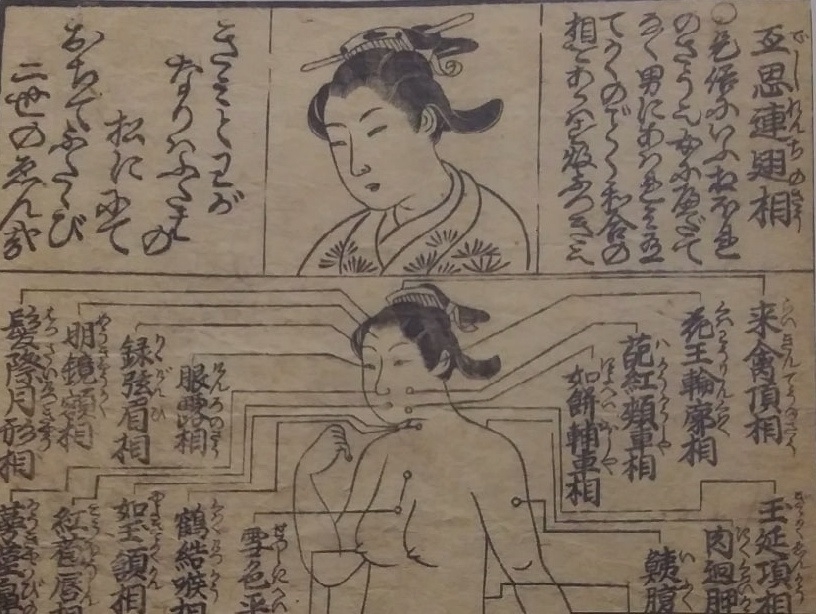
Fig. 16. Tsukioka Settei, “Onna daigaku takara-beki”, ca. 1750s. (Shunga. Explicit art of Japan‘, 2016)
Sources: Wikipedia.org; Christine Marran. So Bad She’s Good: The Masochist’s Heroine in
Postwar Japan, Abe Sada. Bad girls of Japan / edited by Laura Miller and Jan Bardsley. 2005.
Click HERE for the 2nd part of Abe’s unsettling amour fou in which we’re going to explore the controversial movie adaptation on this bloody affair…!!
Let us know your thoughts on this article in the comment box below…!!

